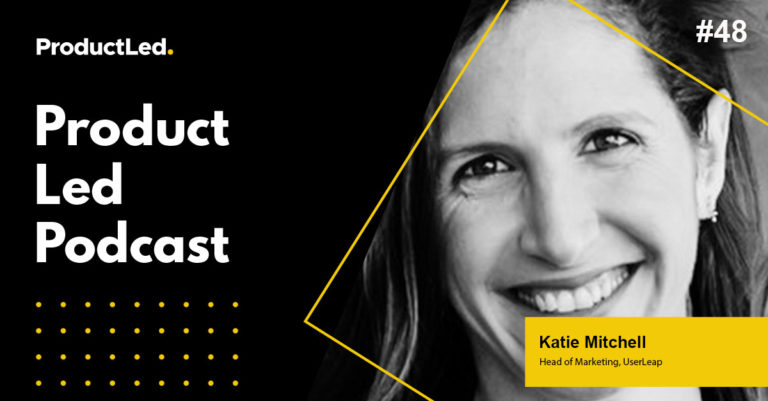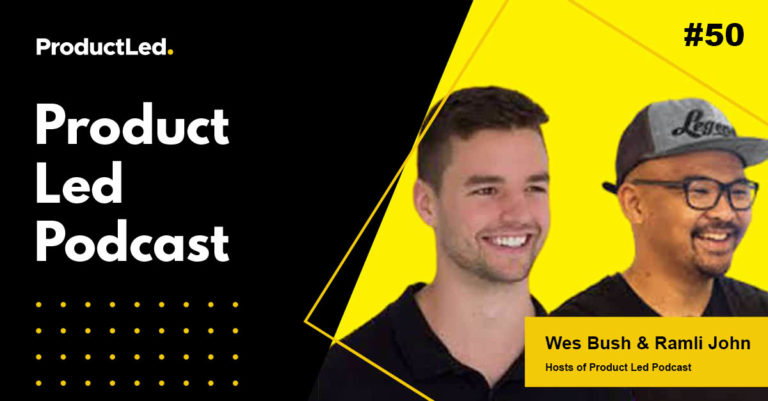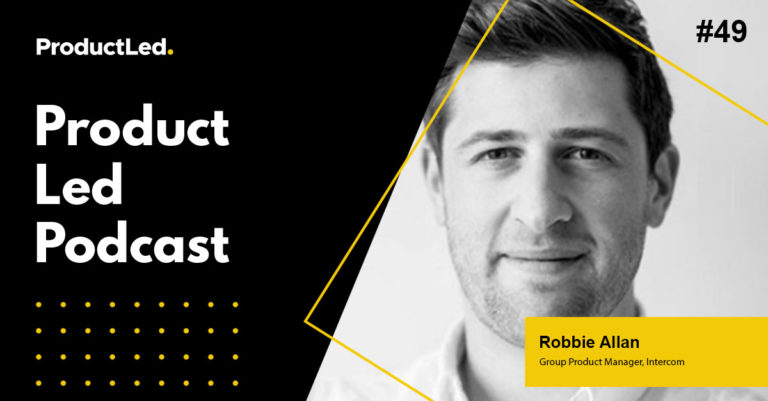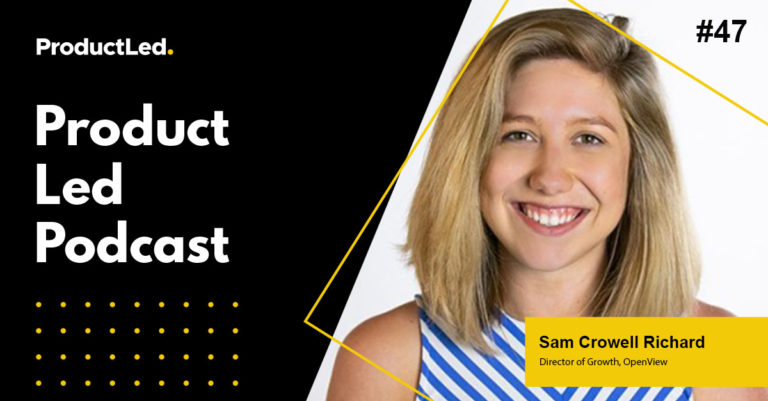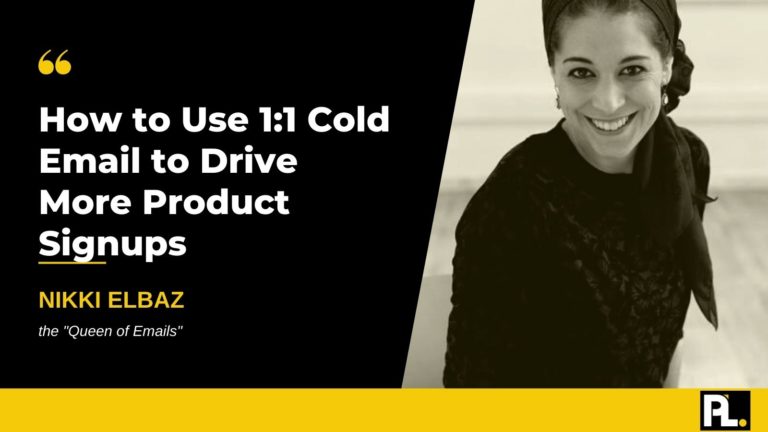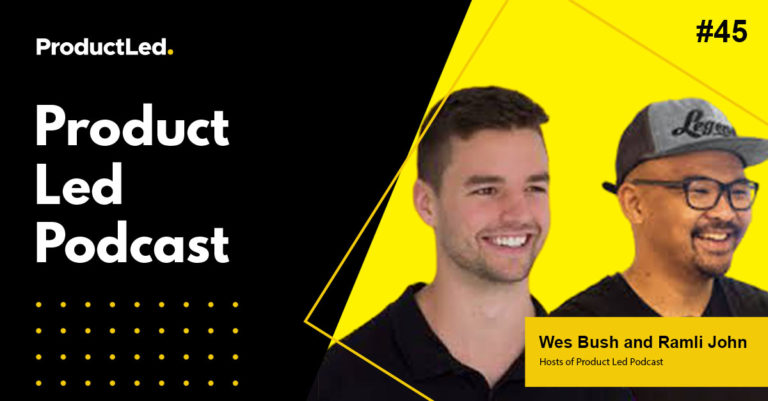If your product is the chief acquisition driver, you need to make sure you’ve built a productive and effective product-led sales team.
You might have a few bright bulbs in your current sales team, but are they equipped to help build your product (and your product’s free trial) into a long-term revenue engine?
Either way, you need to build the best product-led sales team you can, and this is how to do it…
Watch the video below or keep reading to find out!
Make Your Team Understand the Value of a Free Trial
Many team members dread free product trials. They often mistakenly believe that a free product trial will somehow replace their role within the company, making them redundant. As a result, teams might push back on free trial requests and instead attempt to sway leads towards a product demo. Teams that do this are usually afraid to lose control of the sales process (which is understandable to some degree).
To build a successful product-led sales team, you need to switch their focus and redefine their understanding of a free trial. Free trials allow your team to focus on the product as a solution for a problem the customer has. By encouraging leads to activate a free trial, they begin to actually use the product. As a result, they are far less likely to abandon the sales process and are more likely to become successful users of the product in the long-term.
Your product-led sales team must understand that the free trial is NOT the enemy. The free trial is missing one key ingredient and this can only be provided by a sales rep.
What is this key ingredient?
CONTEXT.
The Power of Context
Your product-led sales team understands the customer’s challenges. They know how to map those challenges through their use of the product, which means they can help users get the most from the free trial.
More importantly, the context a salesperson can provide (combined with the product itself) is what triggers the best buying experience for a potential customer.
We’re living in a post-demo world. This means that the traditional sales process doesn’t fit a trial model quite as nicely as you may hope.
Why the Traditional Sales Process Doesn’t Fit a Trial-Driven Model
The traditional sales process involves different stages including research, prospect, connect, qualify, demo, and close. While there’s nothing necessarily ‘wrong’ with this traditional sales playbook, it’s not built for a free-trial model.
There’s no such thing as one set sales process for every business. You may need to adjust your sales model to respond to various factors.
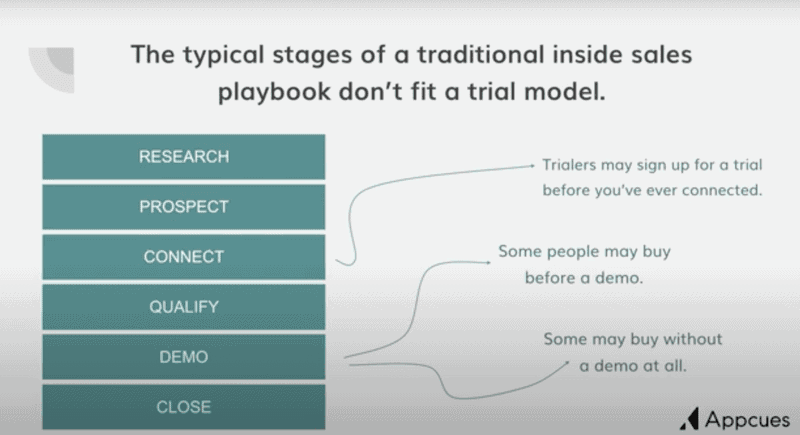
For example, if your sales process involves a free trial, users that sign-up might skip the ‘connect’ phase of the sales process completely and get straight into the trial.
You may face another roadblock with the demo too. For instance, a user may go ahead and buy your product before trialling it. Others might even buy the product without getting a demo at all.
Look at the Buyer’s Journey
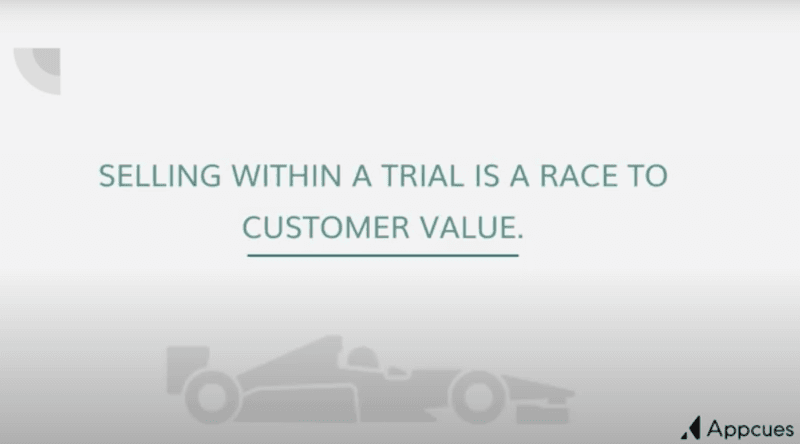
The quicker you can provide value to the user with a free trial, the more likely you will convert the user into a paying customer.
To achieve this, you need to redirect your focus from your sales process to the buyer’s journey.
Below, you’ll see an overview of the buyer’s journey at Appcues:
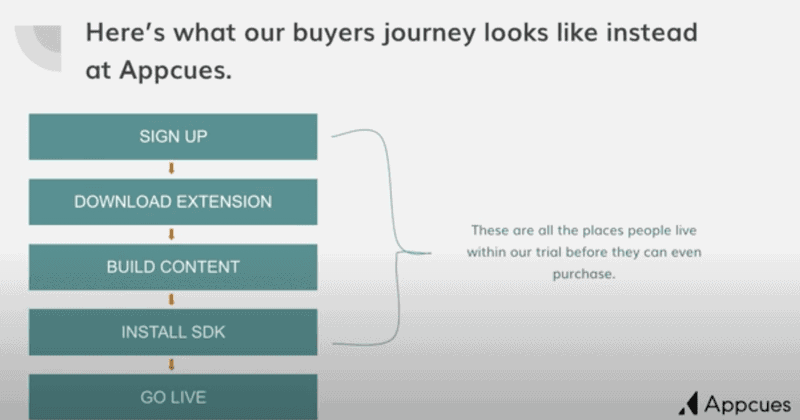
You must effectively align your sales process with what the buyer needs to do so they can make a purchasing decision.
Research shows that companies that follow product-led growth strategies tend to have a lower cost of sales than those that don’t use any product-led growth strategies.
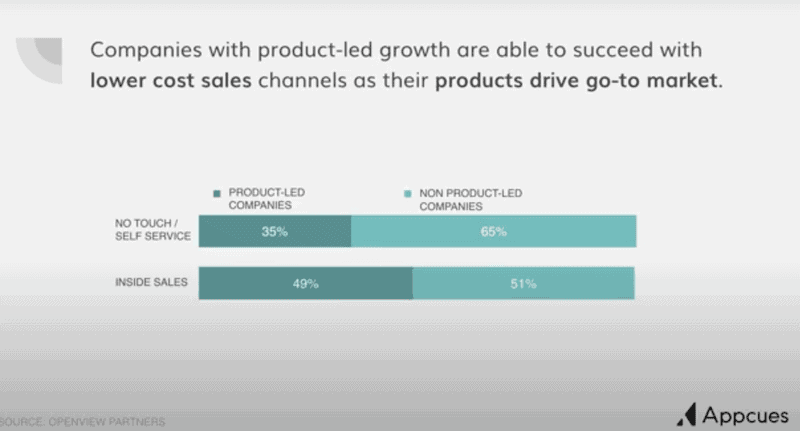
So, how can you build a product-led sales team? And, how can you give them the tools they need to succeed in the context of a free trial sales model?
Here are five plays to run today!
Play 1
First, you must effectively align your sales and marketing efforts around true qualification.
The most successful organizations have a service-level agreement (SLA). This is essentially an understanding of what and how many leads the marketing team feeds the sales team. Focus is shifted from traditional leads (MQLs) to trial leads (SQLs).
The bottom line is that your sales team cannot and will not succeed with trial-driven sales without having the marketing team on board. They need to work together to make all of this happen.
Appcues use a lead scoring tool called MadKudu, an online marketing ops platform. This tool rates leads from low to very good (see an example of this scoring system below).
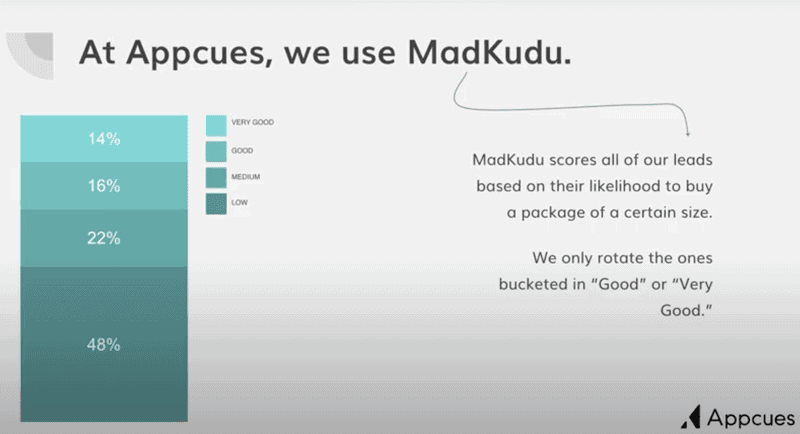
Play 2
Many product-led sales teams are tasked with interpreting deal stages for their forecasts. However, sales reps should be mapping deal strategies to prospect behavior – not rep behavior!
If individual reps are uniquely interpreting deal stages for their forecasts, it means that the chances of reporting misinformed data are much higher. Mapping prospect behavior and the prospect’s deal stages are so important. After all, deal stages reflect the actions that indicate someone will buy.
So, sales reps should map prospect behavior to help identify leads. They must also determine which actions lead to purchase. Then, map those deal stages and actions that lead to purchase instead. Doing this helps take the guesswork out of forecast meetings.
Here’s an example of deal stages carried out by users of Appcues’ free trial:
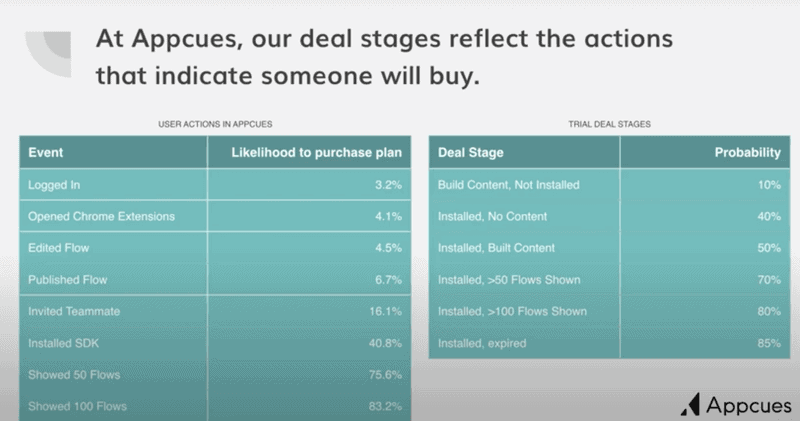
If you want to try something like this with your own sales team, here are some questions to help you qualify and forecast revenue:
- How far along are leads in a trial?
- How many actions have been taken?
- When was their last login?
Play 3
There is no such thing as a one-size-fits-all free trial expiration period. You must find a balance between trial expiration and rep flexibility.
No matter what your product is, people will always want a longer-lasting trial. However, they can’t continue with a trial forever. Businesses must be firm and set trial expirations.
But…your sales team can (and should) extend trials as leverage in a sale.
How can your sales team do this effectively?
Well, there are many different ways to approach this. Appcues discovered a fairly simple way to extend trials using a single Slack ping. They have empowered their product-led sales team with the ability to offer trial extensions to certain customers.
Here is a closer look at how Appcues manages this so effectively. Pay attention to the three ‘deals’ they make with these trial users in exchange for an extension! This helps to ensure that you can move the sales process along beyond the trial extension, which is ultimately why you’re offering the extended trial period in the first place!
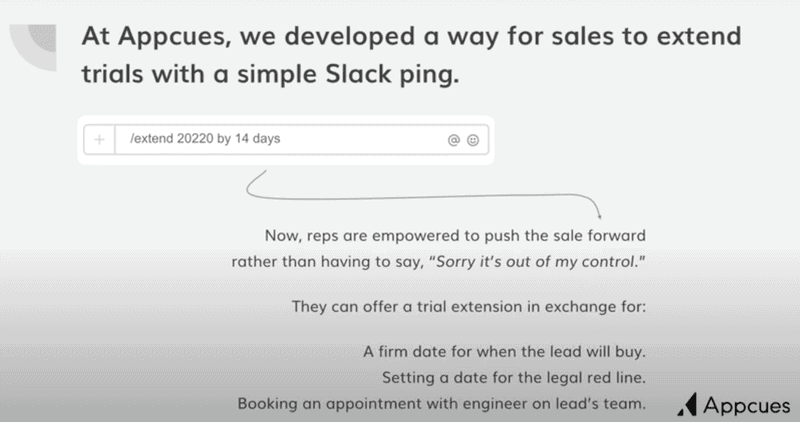
Play 4
Want to see a jump in your conversation rates?
If so, try using product triggers to drive reps to act in real-time. In other words, whenever a user takes a specific action within the product, a message of some kind is triggered. This message has one role – to help move the user along their buyer journey.
This message could be in the form of a follow-up email or an in-app message. In-app messaging is highly effective because it allows for timely action. (see how Appcues use in-app messaging below).
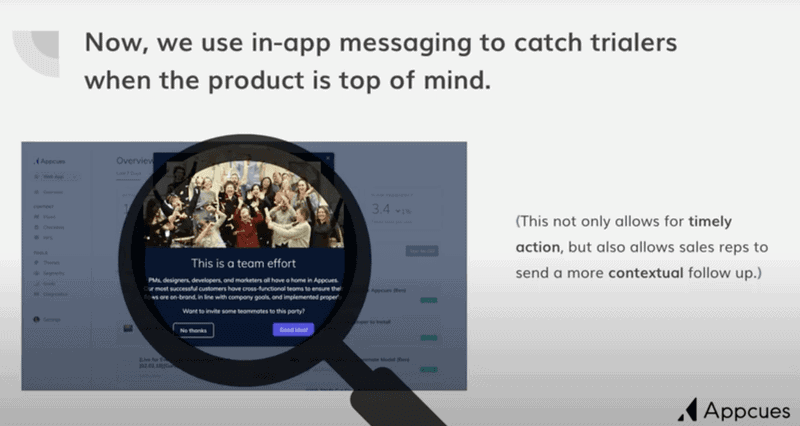
On average, 20% of users who see an in-app message, will take the action you’re encouraging.
Play 5
Have you ever considered having sales reps take on support?
This might not be the most glamorous idea for your product-led sales team, but it is highly effective at moving people trialling the product to purchase faster.
When sales reps take on support, they can communicate with users in real-time. They learn about their problems and help users solve them.
Putting members from your product-led sales team on support is all about meeting buyers where they are in their journey.
When reps have sufficient product knowledge, conversion rates increase because leads are able to move along the buyer journey much faster.
Consider both of the scenarios below:
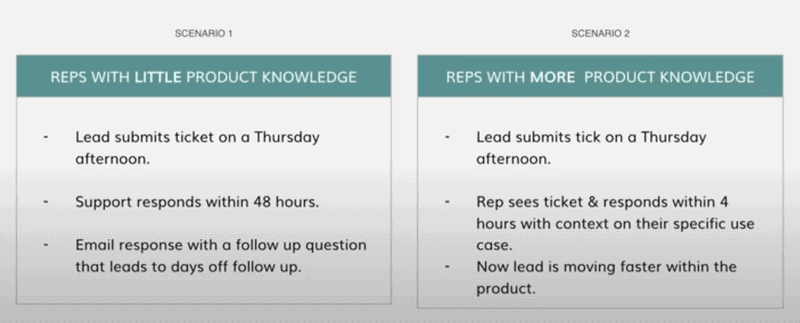
Which of these scenarios would your business prefer?
If you’re thinking about putting your sales team on support, here’s how you can do it so that the sales team member gets the most value from their experience. Whenever Appcues have a new hire, here’s how the first two weeks of training goes:
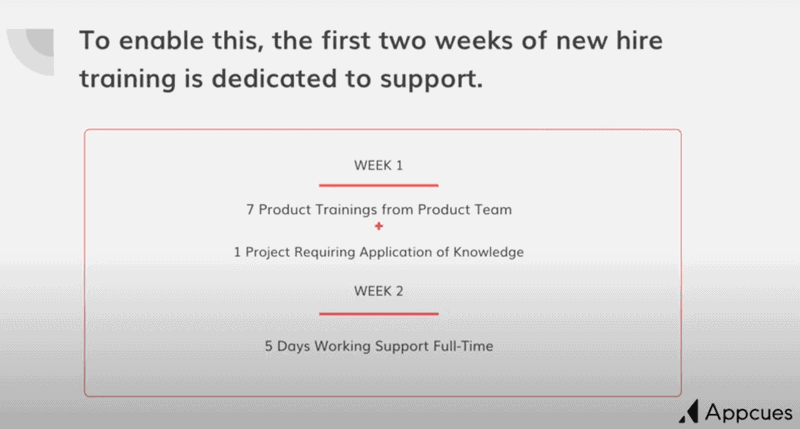
If you want to build a product-led sales team, remember that it’s not about trying to change your reps’ selling style. Instead, your focus should be to equip your sales reps with the necessary tools to be flexible enough to help those taking a trial understand the value the product delivers them. It’s that simple.



